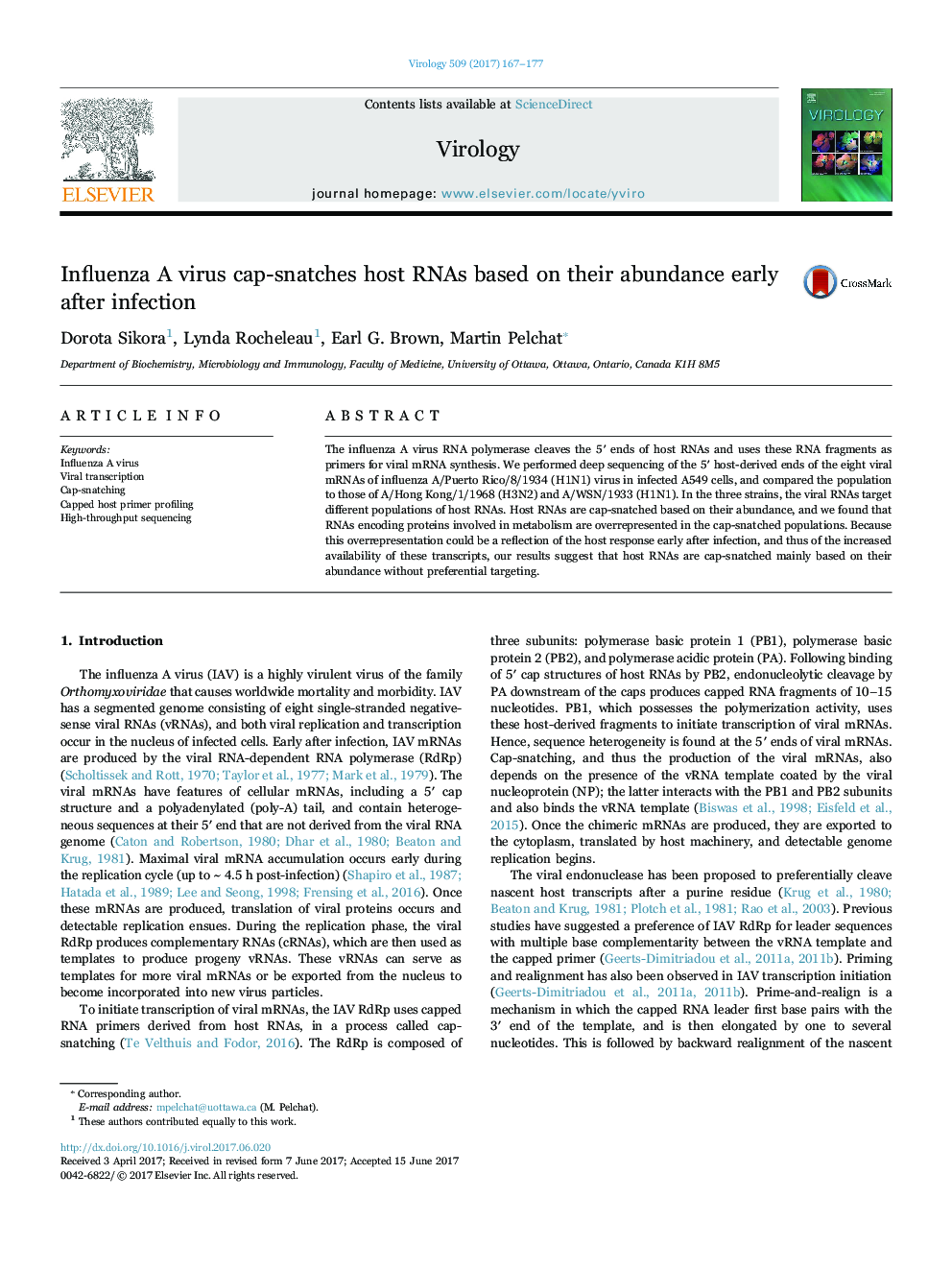| Article ID | Journal | Published Year | Pages | File Type |
|---|---|---|---|---|
| 5674931 | Virology | 2017 | 11 Pages |
Abstract
The influenza A virus RNA polymerase cleaves the 5â² ends of host RNAs and uses these RNA fragments as primers for viral mRNA synthesis. We performed deep sequencing of the 5â² host-derived ends of the eight viral mRNAs of influenza A/Puerto Rico/8/1934 (H1N1) virus in infected A549 cells, and compared the population to those of A/Hong Kong/1/1968 (H3N2) and A/WSN/1933 (H1N1). In the three strains, the viral RNAs target different populations of host RNAs. Host RNAs are cap-snatched based on their abundance, and we found that RNAs encoding proteins involved in metabolism are overrepresented in the cap-snatched populations. Because this overrepresentation could be a reflection of the host response early after infection, and thus of the increased availability of these transcripts, our results suggest that host RNAs are cap-snatched mainly based on their abundance without preferential targeting.
Related Topics
Life Sciences
Immunology and Microbiology
Virology
Authors
Dorota Sikora, Lynda Rocheleau, Earl G. Brown, Martin Pelchat,
